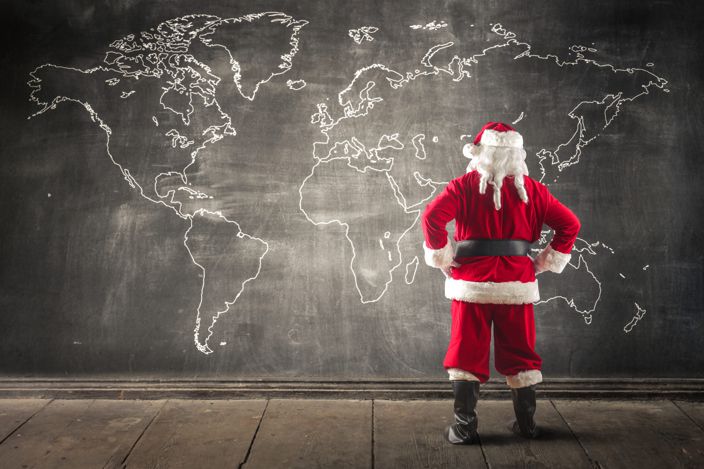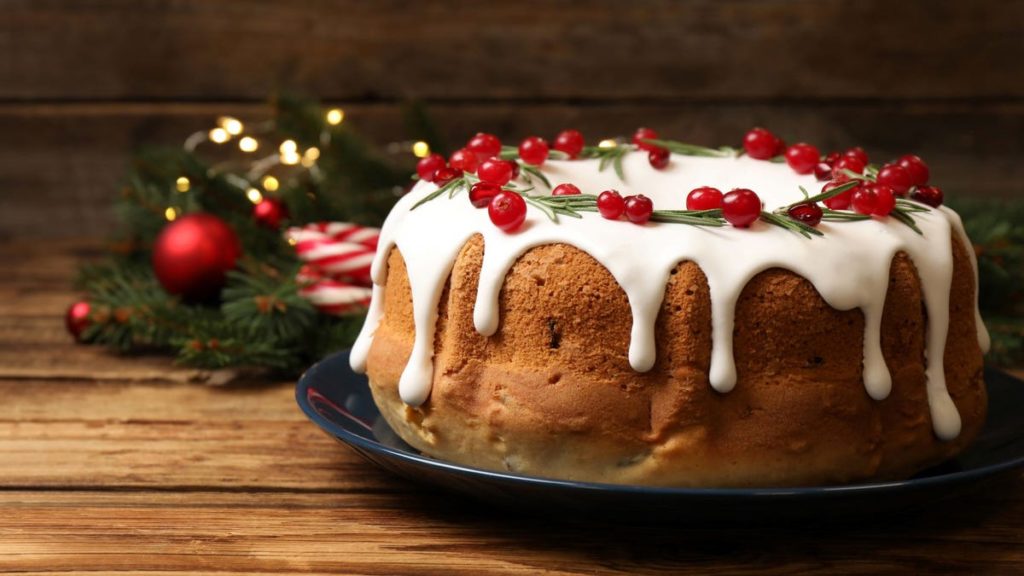We all have an idea of how Christmas celebrations look here in America. You can literally see it in any movie or tv show. But, as we know, the world does not end in America. There are so many other countries to go around. About 160 of them celebrate Christmas, and their unique traditions, customs, and most definitely different food dishes are something that was always so interesting to me.. how do other nations celebrate the same holiday? What do they eat ?? how do they celebrate family time? is it more a religious celebration or the focus is more on the secular side. Join me today on the learning trip to discover how this holiday is celebrated in various places.
Additional Dinner Cover in Portugal

In Poland, we leave an additional place setting at the Christmas Eve table for a hungry wanderer, in Portugal, we leave it for a deceased person. This should be remembered because it will ensure the care of the deceased over the home for another year. Portugal’s Christmas customs are quite similar to the Polish tradition. Maybe except for festive dishes, where the Portuguese table is dominated by cod dishes and Bolo Rei cake – royal round cake with candied or dried fruit and nuts. Certainly, our hosts in Portugal remember about an additional cover for a wanderer or a deceased person!
Fried chicken in Japan

Back in 1974, the American fast-food restaurant KFC released a festive marketing campaign in Japan. The seemingly simple slogan “Kurisumasu ni wa kentakkii!” (Kentucky for Christmas!) spawned a national tradition that still thrives to this day. Although Christmas is not a national holiday in Japan, families from all over the country head to their local KFC for a special Christmas Eve meal. It is also hard to find red Christmas cards in Japan. All because mourning announcements are usually printed on this color of paper.
Dancing fun in Spain

One of the traditions in Spain is the “Baile de los Seises” dance ceremony, which always takes place on December 8. People dance in the streets to the beat of tambourines, rattles, and castanets. They also decorate houses and streets with colorful lights and build Christmas cribs. You will not find a wafer on the Spanish Christmas Eve table, instead, halva is prepared.
Orthodox Christmas in Russia

The Russians celebrate Christmas on January 7 (according to the Julian calendar). Then they go to the church, where the Nativity Liturgy takes place, which usually begins after midnight. Christmas does not play such a significant role in the Orthodox tradition as it does in the Catholic Church. The New Year is celebrated more solemnly. Christmas traditions in Russia are very similar to Polish Christmas customs. On Christmas Eve, which is Soczelnik, Russians sit down at a table where, like ours, there are twelve dishes. There is also a beautifully decorated Christmas tree. Instead of the wafer, Orthodox Russians share with the family prosfor, that is, the holy bread. Gifts for children are brought by Grandfather Frost.
Twelve meatless dishes in Poland
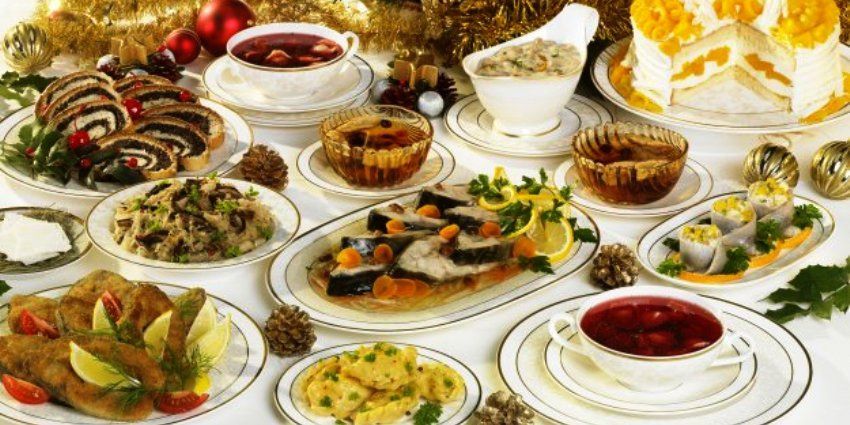
In Poland, the most important day of Christmas is Christmas Eve. Traditionally, you fast through the entire day till the first star appears in the sky, and you can start the supper. The family gathered, first shares “ Oplatek” ( Christmas wafer) exchanging best wishes. The supper itself is composed of twelve meatless dishes ( herrings, Carp, sauerkraut, and mushrooms pierogi, Bortsch ), just like you have 12 months and twelve apostles. The best part is that is you have to try each one of them. There is always one extra seat by the table, for an unexpected guest or a stranger traveler, it is also to commemorate the family members who are no longer among us.
Playing Genna in Ethiopia
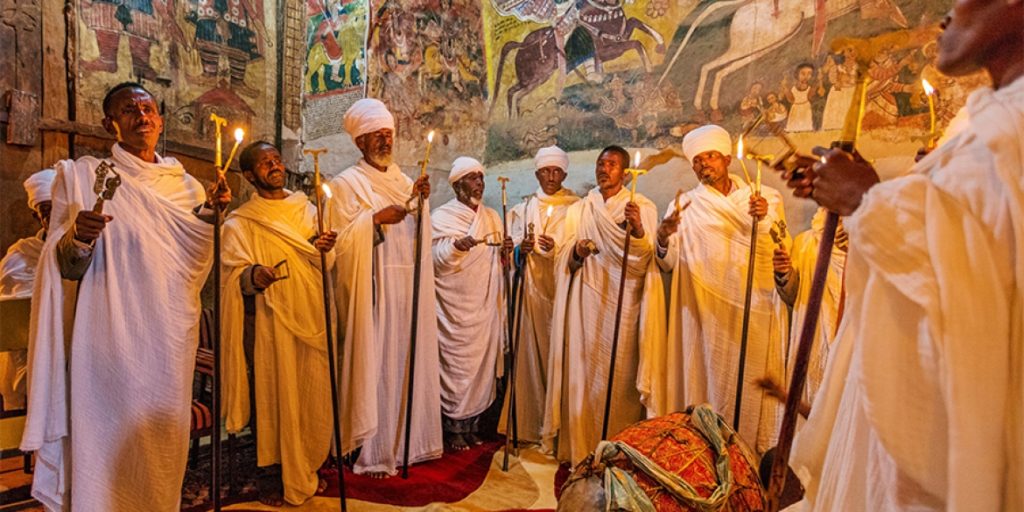
In Ethiopia, Christmas begins on January 7. It is called Gena or Lidet. Throughout the night, the townspeople walk in procession from the church to church, singing, dancing, and playing instruments. Ethiopians eat a spicy poultry stew, which is served with injera. Injera is a dish that replaces bread. For this served honey alcoholic drink. The holiday is preceded by a 43-day fast. The Christmas tradition is Genna, i.e., the game resembles field hockey. Legend has it that the shepherds in Bethlehem were supposed to spend their time playing genna. Melkam Genna means Merry Christmas in Ethiopia.
Flying shoes in the Czech Republic

In the Czech Republic, single ladies on Christmas Eve, and not on St. Andrew’s Day, predict a marriage. Upon entering the house, they take off one slipper and toss it behind them. If he puts his nose towards the door, the woman will get married soon.
Shoes by the Fire in The Netherlands

Every year in the days leading up to December 25th, Dutch children eagerly place their shoes by the fire in hopes that Sinterklaas will fill them with small gifts and treats in the night. Traditionally, carrots are left in the shoes of Sinterklaas’ faithful steed, a white horse named Amerigo. In the olden days, naughty children would receive a potato instead of gifts, but potato punishment is no longer considered an appropriate scare tactic.
Many days of Christmas in Latvia
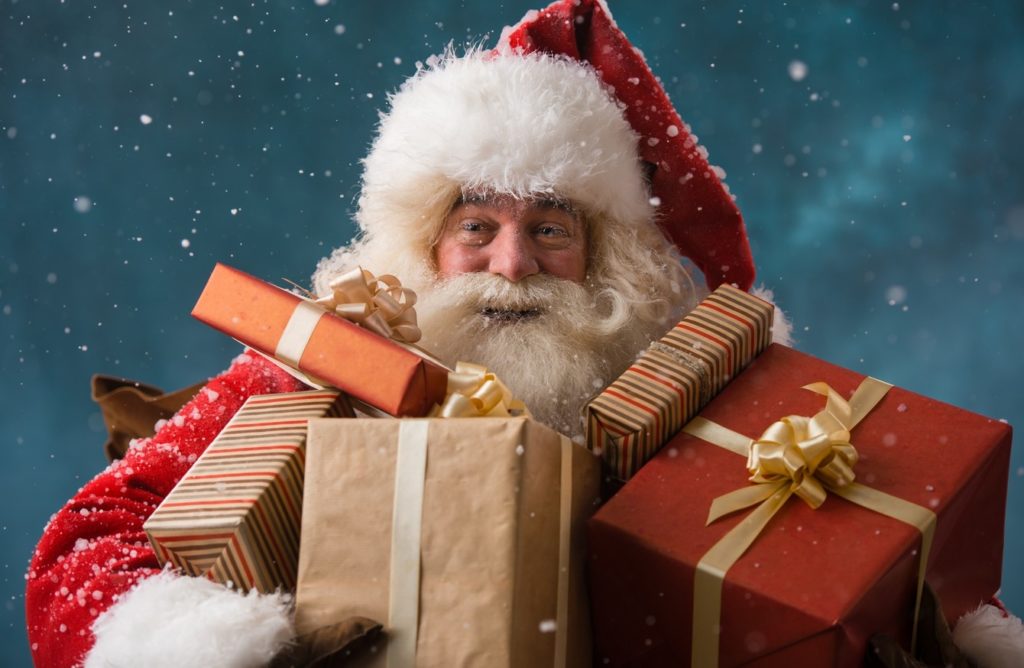
Latvian Santa Claus goes by the charming moniker of” Ziemmassve’tku veci’tis,” or “Big Zimmer” for short. “Big Zimmer”, Latvian Santa Claus gives gifts to children not one day, but as many as 12 days in a row. This is probably the busiest Santa Claus in the world …
Festive feast in Cuba

We will not see a Christmas tree in Cuba! There is also no magic about gifts. There is no carp or even American turkey. Instead, a piglet is grilled. Apart from the meat itself, there are also cheesed drinks such as beer and rum. This is an enjoyable time to feast together. Although there is nothing to see in this spiritual rapture. However, should not it be the most important thing to spend time together? This is what we can learn from our Cuban Hosts!
Christmas Under Palms in the Maldives
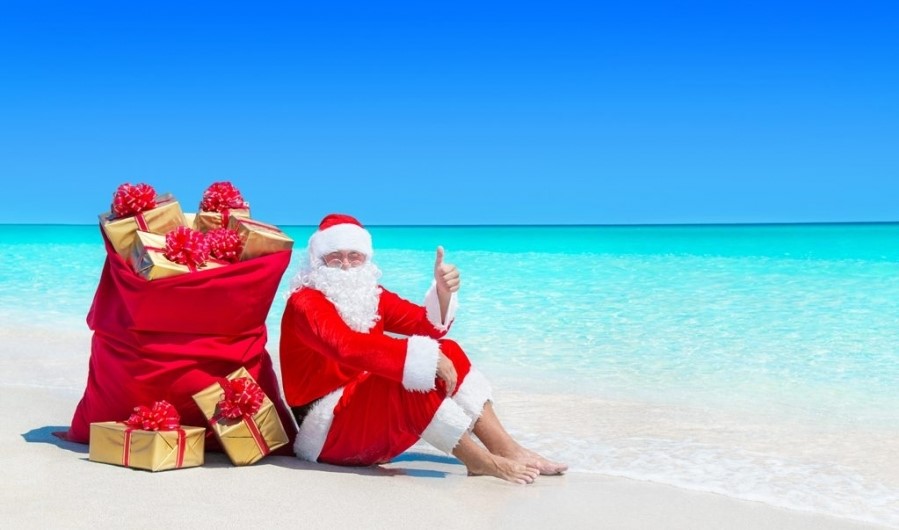
What is Christmas like in the Maldives? Like in heaven! You can choose a Santa Claus hat for your swimsuit, and you can make a snowman out of … sand! Although these are slightly different holidays because under a palm tree and in a warm climate, they are a dream idea for some to spend Christmas. It will surely be a time without rush and pre-Christmas bustle. I wonder how our hosts spend their holidays in the Maldives, which is after all a Muslim country.
Illuminations In Malta
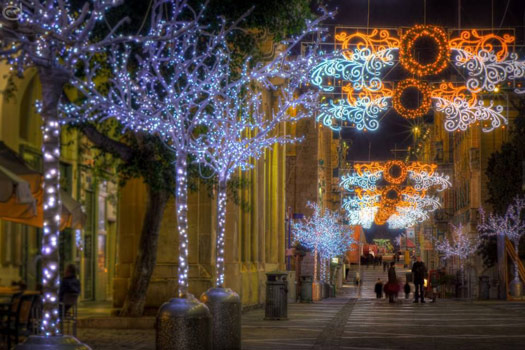
The Maltese people put on Christmas cribs. You can find them everywhere. Interestingly, they decorate not only churches but also shop windows and private yards. A characteristic feature is also richly decorated streets and houses. There are most of the lights, illuminations decorate the entire facades of buildings. On holidays, Malta becomes an illuminated island. I wonder if our hosts are also putting up a Christmas nativity scene!
Christmas Peace in Nepal

What is Christmas like in Nepal, where the percentage of Christians is low? The Christmas Eve supper is not much different from a normal meal, although in shops you can find Santa Clauses and plastic Christmas trees, and in pastry shops, you can choose Christmas pastries. Maybe this is a recipe for a successful holiday, without visiting a shopping mall, washing windows, and car? No queues at stores and no buying Christmas gifts. In Nepal, you can calmly prepare for this amazing time that you will just spend together. I wonder if our hosts in Nepal decorate Christmas trees.
Gävle Goat in Sweden

Since 1966, a 13-meter-tall Yule Goat has been built in the center of Gävle’s Castle Square for the Advent, but this Swedish Christmas tradition has unwittingly led to another “tradition” of sorts – people trying to burn it down. Since 1966 the Goat has been successfully burned down twenty-nine times – the most recent destruction was in 2016. If you want to see how the Goat fares this year when it goes up on December 1st, you can follow its progress on the Visit Gävle website through a live video stream.
Day of the Witch in Italy

On December 24, Italians sit down to Christmas Eve dinner with their relatives. There are thirteen dishes on the festive table. You eat fast foods, fish, and vegetables. On the second day, there is a festive dinner, also in the family circle, but it is no longer fasting. Forget Santa and December 25th when in Italy, as all the action takes place on the eve of 5th January. According to folklore, an old woman named Befana visits all the children of Italy to fill their stockings with candy and leave them presents if they have been good. Just like Father Christmas, Befana enters through the chimney and is left treats by the children who live there – typically wine and local delicacies.
Pickle in the Tree in Germany
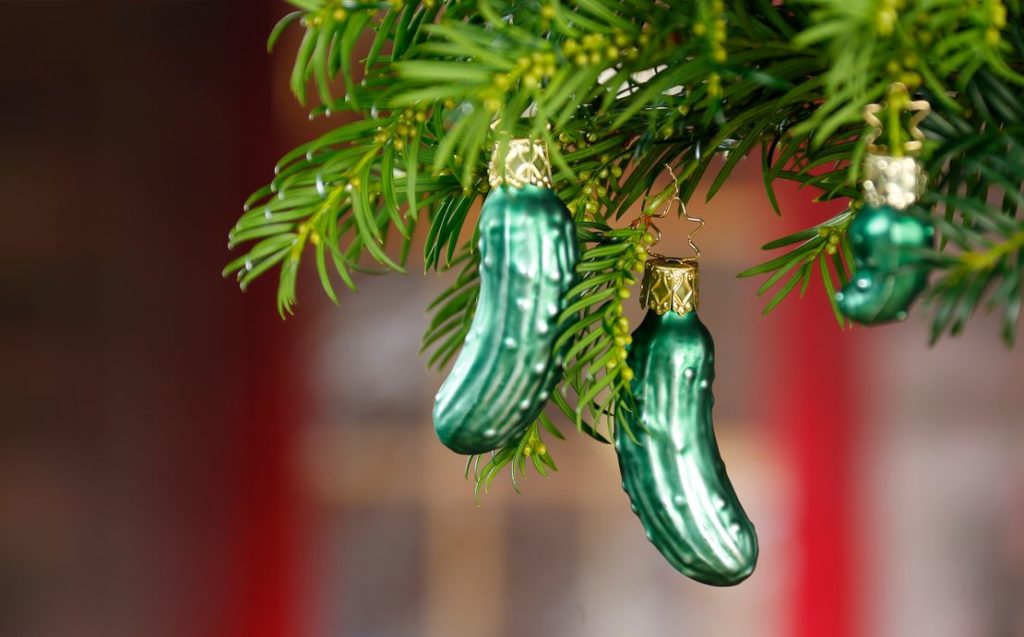
The Christmas tree tradition embraced around the world today is believed to have started in Germany back in the 16th Century, so it comes as no surprise that our continental cousins still have some unique customs relating to the festive conifers. One of these is to hide a pickle somewhere within the branches of the tree and give a gift to whichever child in the household finds it. Some claim that the tradition may not be German after all. One legend says that the Christmas pickle originated in Spain when two young boys were held as prisoners inside a pickle barrel. The heroic Saint Nicholas rescued the boys and brought them back to life. Either way, a pickle on the Christmas tree is a tradition we can get behind.
Hidden broom in Norway

Perhaps one of the most unorthodox Christmas Eve traditions can be found in Norway, where people hide their brooms. It is a tradition that dates back centuries to when people believed that witches and evil spirits came out on Christmas Eve looking for brooms to ride on. To this day, many people still hide their brooms in the safest place in the house to stop them from being stolen.
Night full of lights in Canada

In wintry, wonderful Toronto the annual Cavalcade of Lights marks the official start to the holiday season. The first Cavalcade took place in 1967 to show off Toronto’s newly constructed City Hall and Nathan Phillips Square. The Square and Christmas tree are illuminated by more than 300,000 energy-efficient LED lights that shine from dusk until 11 pm until the New Year. On top of that, you will get to witness spectacular fireworks shows and engage in some outdoor ice skating.
Saint Nicholas’ Day in Germany
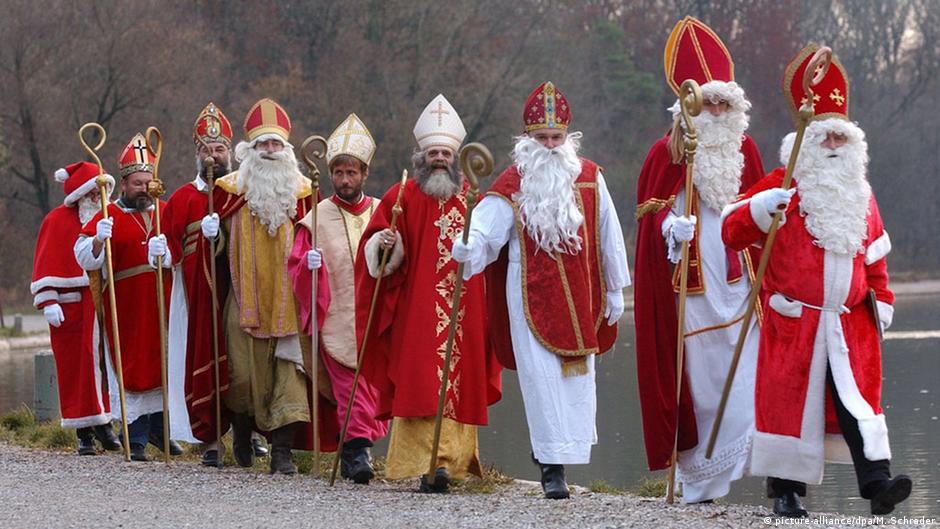
Not to be confused with Weihnachtsmann (Father Christmas), Nikolaus travels by donkey in the middle of the night on December 6 (Nikolaus Tag) and leaves little treats like coins, chocolate, oranges, and toys in the shoes of good children all over Germany, and particularly in the Bavarian region. St. Nicholas also visits children in schools or at home and in exchange for sweets or a small present each child must recite a poem, sing a song, or draw a picture. In short, he is a great guy. But it is not always fun and games. St. Nick often brings along Knecht Ruprecht (Farmhand Rupert). A devil-like character dressed in dark clothes covered with bells and a dirty beard, Knecht Ruprecht carries a stick or a small whip in hand to punish any children who misbehave.
Holidays in the middle of summer in New Zeeland
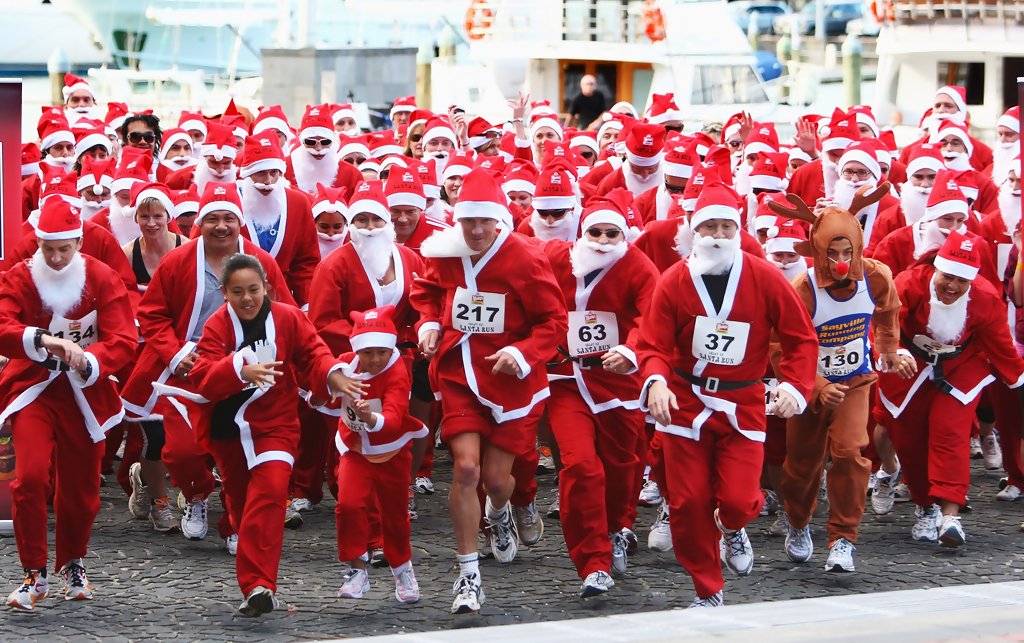
Can you imagine Christmas on the beach? New Zealanders have a Santa Claus parade on Christmas Day. New Zealand children, in turn, invite Santa, leaving him pieces of pineapple and beer. Carrots are waiting for the reindeer. In New Zealand, Christmas carols that are sung in public in the streets are a sensation. When it comes to food, it is ruled by the grill and delicacies served from it, such as baked ham, shrimp, or game, which is not as easily available as in our country. Among the desserts, Meringue Pavlova is the most popular. New Zealand gifts are given after Christmas lunch.
Sailing Boat Instead of Christmas Tree in Greece
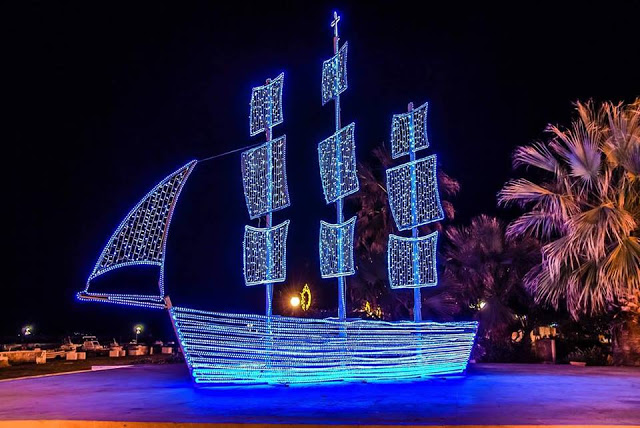
On the day before Christmas and New Year’s, Greek children sing Christmas carols as they go from house to house. Most often to the accompaniment of small metal triangles and small clay drums. You can find Christopsomo, or the Bread of Christ, on almost every table. It is a round loaf decorated with a cross at the top, around which people put dough symbols representing everything that signifies durability. The most important Christmas symbol in this country is not a Christmas tree but a decorated… model of a sailing ship. I wonder if our hosts in Greece also have such a sailing ship.
Great shopping time in China

In China, Shengdan Jie, or Venerable Birthday Festival, is celebrated. This is a time when the people of China focus more on the commercial than the religious aspect. On Christmas Eve, families meet in restaurants, and after a meal together, they go to clubs to play. The Chinese decorate their homes with colorful decorations, decorate Christmas trees and give expensive gifts. Only ten million Christians live in China or about 1 percent of the population. Christmas in China is a big shopping time. All shopping malls, hotels, and restaurants are decorated with Christmas decorations, which creates a joyful and magical atmosphere. Some restaurants have a special Christmas menu. It is a Christmas tradition to hand out apples. The apple is a symbol of Christmas in China. Mikołaj can be found on the streets, in shopping malls, and also bringing letters instead of a postman.
Christmas turkey in Albania
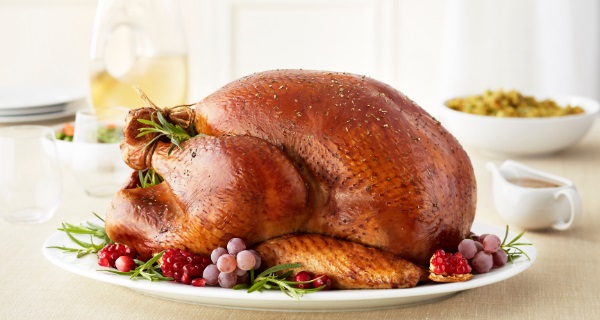
In Albania, Christmas is more of a commercial than a spiritual dimension. Nevertheless, there is no shortage of a festive atmosphere. There is a Christmas tree, an ice rink or a turkey dinner in the lead role, and sweet baklava … Turkish for dessert! This is by far the most important Christmas dish in any Albanian home. It is served with dollme – a small round bread. It is baked on its own. Remember to add a coin to the cake (top divided by the number of household members with initials written on it)! After baking, crush it and check who got the lucky coin that will ensure success throughout the next year. Have our hosts managed to find the magic coin?
Christmas Table Under the sky in Cyprus

Christmas in Cyprus is celebrated on December 25, and Cypriots do not celebrate Christmas Eve. December in Cyprus is usually very warm, which is why the festive table is often placed on the terrace or in the garden. Not all Cypriot children are visited by Saint Nicholas… but do not worry, it’s just that on December 31st some people are brought gifts by Saint Basil! On this day, “Vassilopitta” also reigns, which is a traditional cake shared between family members in the order from the oldest to the youngest. I wonder if our hosts in Cyprus also eat the Christmas cake!
A completely sweet Christmas in Denmark

The Christmas Eve menu in Denmark looks interesting. Served here are baked goose with apples, sweet rice with cinnamon, and rice pudding. There is an additional tradition associated with the latter. The hostess always puts almonds in one portion. Whoever finds it, gets … marzipan pig (to make it even sweeter), which is to ensure happiness for the next year. It is not known if the entire year will be successful, but the winner will certainly enjoy a sweet moment of pleasure by consuming this pig.
Día de las Velitas in Colombia

The day of Little Candles’ marks the start of the Christmas season across Colombia. In honor of the Virgin Mary and the Immaculate Conception, people place candles and paper lanterns in their windows, balconies, and front yards. The tradition of candles has grown, and now entire towns and cities across the country are lit up with elaborate displays. Some of the best are found in Quimbaya, where neighborhoods compete to see who can create the most impressive arrangement.
Floating Christmas Tree in Brazil

Most of Brazil’s Christmas traditions are closely related to Portugal, which is obviously due to the more than 300-year colonization period. As spruce is not found in the wild in Brazil, most Christmas trees are artificial – and decorated with lots of colorful lights. For almost 30 years, the world’s largest floating Christmas tree has been set up on the Rodrigo de Freitas Lake in Rio de Janeiro. It is on average about eighty meters high, weighs over five hundred tons, and has three million (!) Lights.
Krampus in Austria
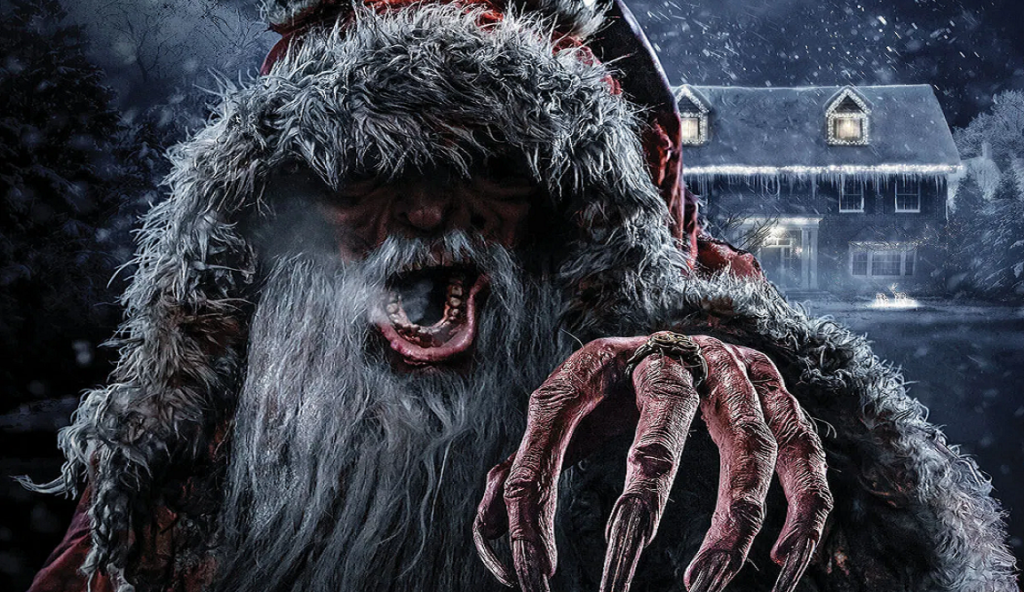
All children know that by counting on gifts from Santa Claus, you have to be polite all year round. The youngest citizens of Austria, however, are even more motivated: the rod is accompanied by … a furry, horned creature with a diabolical mask, “decorated” with chains and cowbells. This is Krampus, which came to the Austrian Christmas tradition straight from folk tales. There is even a huge Krampus parade in Tirol in the run-up to Christmas. A beast-like demon creature that roams city streets frightening kids and punishing the bad ones – nope, this is not Halloween, but St. Nicholas’ evil brother, Krampus. In Austrian tradition, St. Nicholas rewards nice little boys and girls, while Krampus is said to capture the naughtiest children and whisk them away in his sack. In the first week of December, young men dress up as the Krampus (especially on the eve of St. Nicholas Day) frightening children with clattering chains and bells.
Dancing Christmas carols in the Dominican Republic
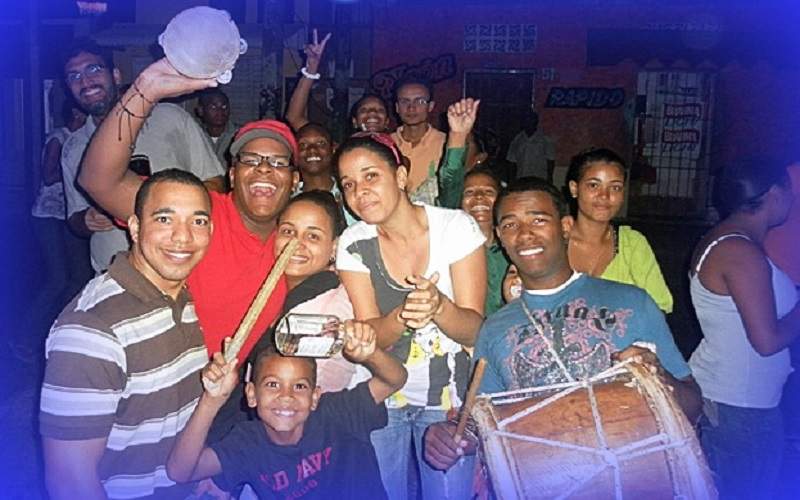
There is a red Christmas star in almost every home, and colorful nativity scenes are set up in churches and houses. The Christmas atmosphere is emphasized by carols that differ significantly from those we know. Many of them are in the merengue rhythm and you can even dance to them. During dinner, you can also try flourishes in banana leaves filled with several types of meat and fish, cheese, and vegetables. A toast is usually made with a glass of rum, homemade eggnog, anise liqueur, or red wine. What are our hosts to the Dominican Republic most eagerly listening to?
Food fight in Slovakia
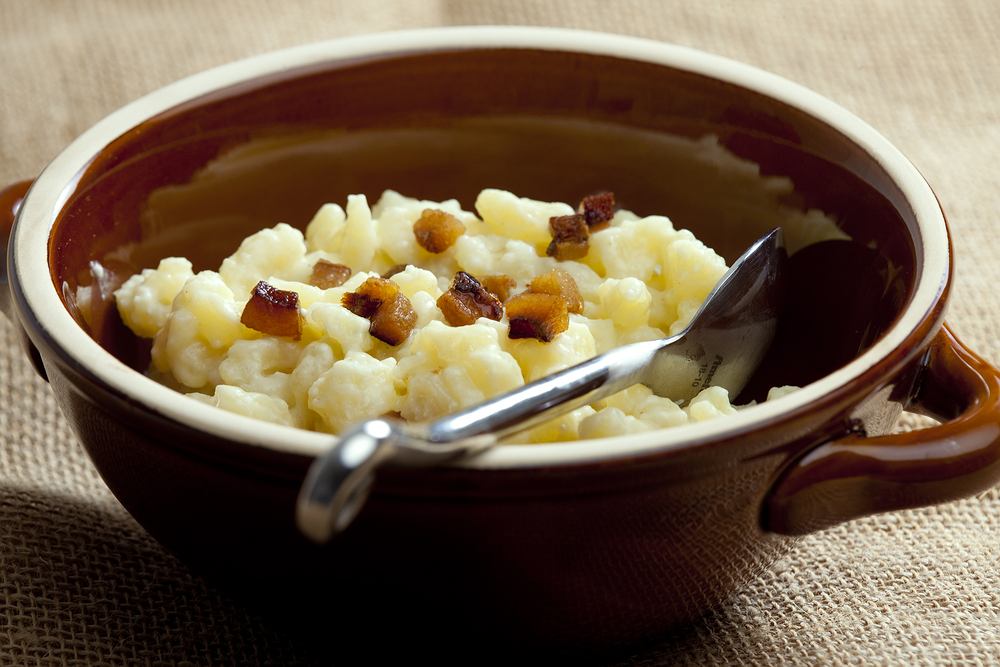
Throwing food is a very strange custom that is still practiced in some homes in Slovakia. At the beginning of the Christmas dinner, the head of the family scoops one of the traditional dishes and throws it at the ceiling. The more food that is left on the ceiling, the happier your household will be in the coming year. But who then paints the ceiling?
Giant Lantern Festival in the Philippines
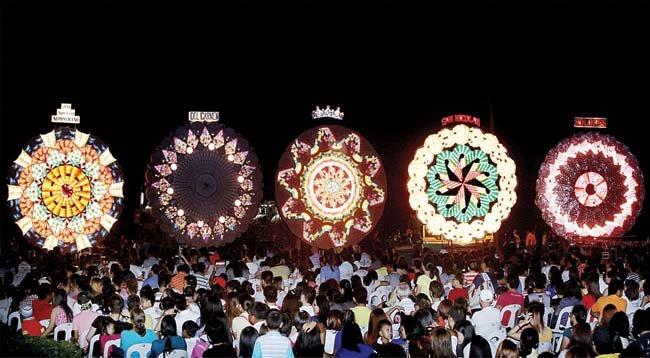
“Ligligan Parul Sampernandu” is held each year on the Saturday before Christmas Eve in the city of San Fernando – the “Christmas Capital of the Philippines.” The festival attracts spectators from all over the country and across the globe. Eleven barangays (villages) take part in the festival and competition is fierce as everyone pitches in trying to build the most elaborate lantern. Originally, the lanterns were simple creations around half a meter in diameter, made from “papel de hapon” (Japanese origami paper) and lit by candle. Today, the lanterns are made from a variety of materials and have grown to around six meters in size. They are illuminated by electric bulbs that sparkle in a kaleidoscope of patterns.
Christmas BBQ in South Africa
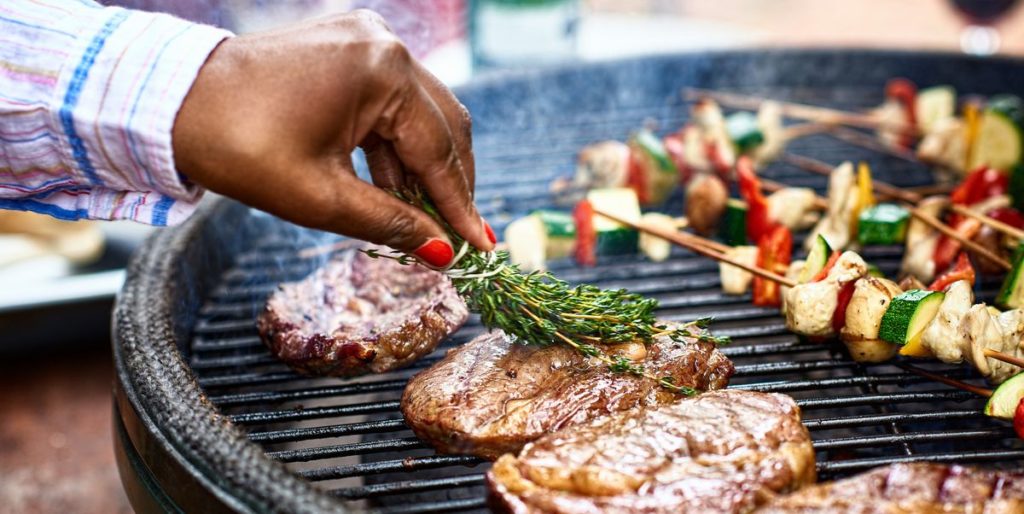
In South Africa, Christmas traditions differ significantly depending on the region and culture to which a family belongs, but most of the country’s citizens share one custom, which is … a festive barbecue. Christmas falls there during the summer period, the Christmas tree, if it is, is artificial, and most often it is decorated with palm trees. Those who do not spend Christmas in resorts flock to Christmas barbecues: in gardens, parks, or even national parks, eating and singing Christmas carols.
Posh Christmas in France
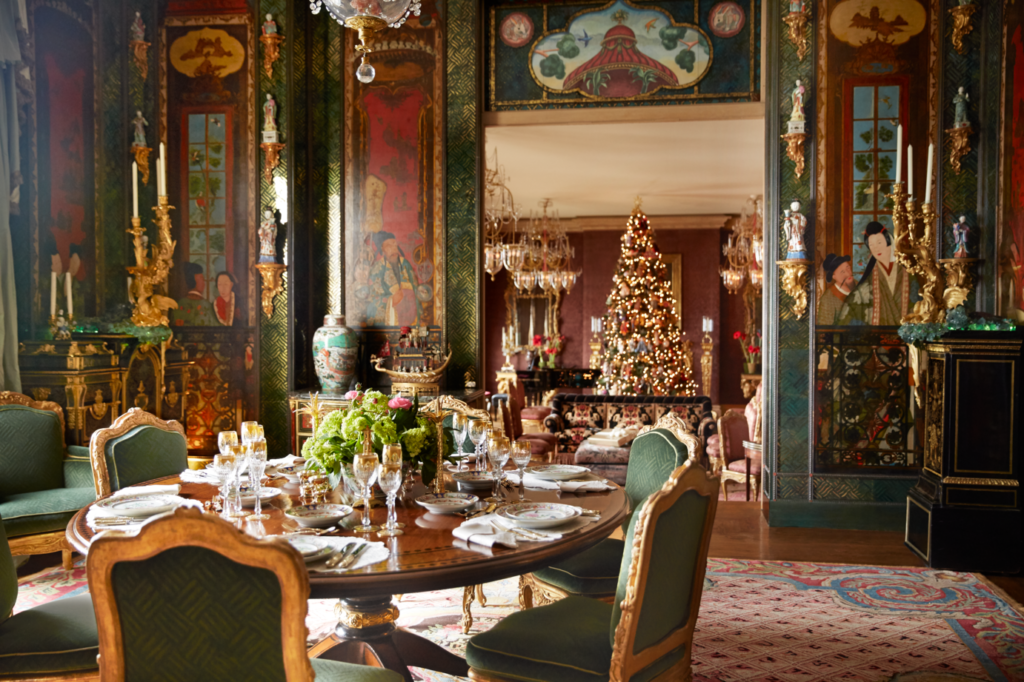
In France, the holiday atmosphere can already be felt a few weeks before Christmas. Everyone is overcome by the shopping fever. Store owners try to outdo each other in decorating displays. City streets are decorated with colorful lamps and stars. Christmas plays a very important role in France. These are family holidays. The French give each other handmade Christmas cards and buy gifts. There is no Christmas Eve in France. The French attend mass and sit down to dinner on December 25. On this day, turkey stuffed with chestnuts is eaten and a lot of champagne is drunk. In France, children believe that it is little Jesus who brings them gifts, which he places on Christmas Eve’s shoes by the fireplace.
The Yule Lads in Iceland

In the 13 days leading up to Christmas, thirteen tricksy troll-like characters come out to play in Iceland. The Yule Lads (jólasveinarnir or jólasveinar in Icelandic) visit the children across the country over the 13 nights leading up to Christmas. For each night of Yuletide, children place their best shoes by the window and a different Yule Lad visits leaving gifts for nice girls and boys and rotting potatoes for the naughty ones. Clad in traditional Icelandic costume, these fellas are pretty mischievous, and their names hint at the type of trouble they like to cause: Stekkjastaur (Sheep-Cote Clod), Giljagaur (Gully Gawk), Stúfur (Stubby), Þvörusleikir (Spoon-Licker), Pottaskefill (Pot-Scraper), Askasleikir (Bowl-Licker), Hurðaskellir (Door-Slammer), Skyrgámur (Skyr-Gobbler), Bjúgnakrækir (Sausage-Swiper), Gluggagægir (Window-Peeper), Gáttaþefur (Doorway-Sniffer), Ketkrókur (Meat-Hook) and Kertasníkir (Candle-Stealer). Visit Iceland this Christmas and catch them all!
Roller Skating crowd in Venezuela

In the Venezuelan capital of Caracas, swathes of city-dwellers make their way to mass on roller skates every year on Christmas morning. The tradition is now so well established that many of the city’s streets are closed to traffic from 8 am so that the skating congregation can get to church safely. It is even said that children will sleep with one lace from their skates tied around their toe, the other skate dangling from the window so that their friends can wake them up with a friendly tug on the lace.
Oatmeal with hidden almond – in Finland
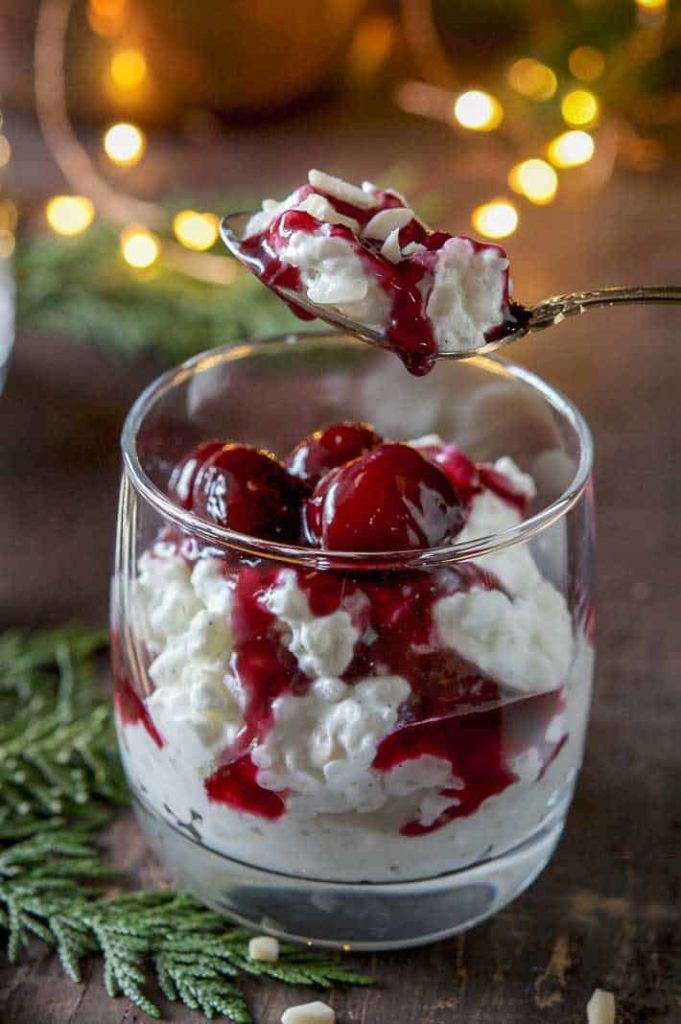
On the first day of Christmas in Finland, it is traditionally eaten porridge with milk, rice, and cinnamon, to which one almond is added. Of course, the household member who finds him wins, but in many families, more of them are added in order not to spoil the fun for the youngest.
Posada – Christmas celebration in Mexico

From December 16, children regularly perform Posada – a procession during which they show how Joseph and Mary looked for a place for themselves for 9 days. During the procession in smaller towns, houses are decorated, and children move between them, asking for a welcome. From all the houses, they are asked to ask them out one by one until they reach the last house where the party takes place. Of course, the places are pre-arranged and the house where the party takes place is different every day. There is usually a Piñata at such an event which has seven ends, which is meant to symbolize the seven cardinal sins. Blindfolded children try to smash her. The decorations are mainly nativity scenes, which are often life-size even in homes.
Christmas Spiders in Ukraine
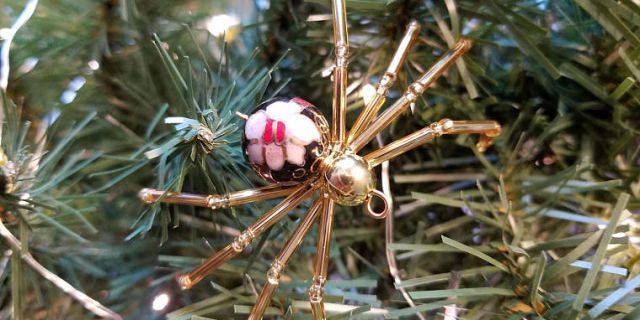
Believe it or not, there is such a thing as a Christmas Spider. In Ukraine, Christmas trees are decorated with cobwebs. Just do not be scared, the decorations only look like a spider’s web and symbolize good luck. The custom comes from a story about a poor woman who could not afford Christmas decorations. The next day, when she woke up, she saw a tree covered with cobwebs that sparkled in the sunlight. Other countries, such as Poland or Germany, will find it a good sign to find a spider web in the Christmas tree.
Christmas Monsters in Iceland
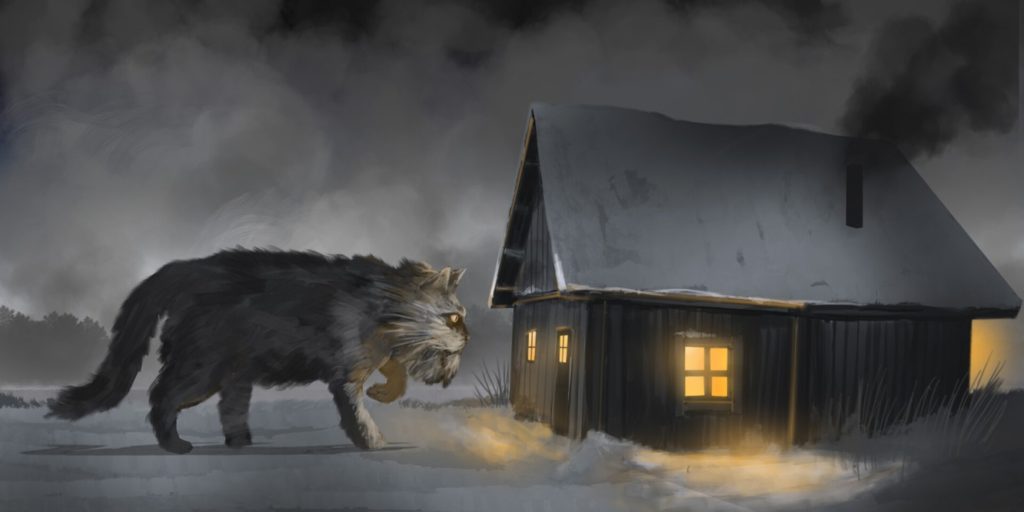
Christmas, in all its glory and joy of celebration, is also a time for monsters who remind children to behave well at least one month a year. One of the most interesting members of the Christmas Police is Jólakötturinn, an Icelandic Christmas cat. It sounds cute, but as it does in life, it sounds better than it really is, Jólakötturinn devours children, specifically those who have not fulfilled their household duties, and thus: they will not get new clothes for Christmas. Happy Holidays!
Summer relax in Australia

In Australia, the Christmas season falls during the summer, which runs from early December to late February. The temperature reaches 30 degrees Celsius, and snow can only be seen on TV. Winter hats and insulated boots are replaced by summer hats and flip-flops. The holiday season in stores begins in September, where you can find Christmas decorations on the shelves. The Christmas tree is dressed up at the beginning of December and is kept at home until the end of the month. Many families meet in cities and sing Christmas carols together. This tradition is called “Carols by Candlelight.” Australians do not cook much because the heat is not conducive to it. Instead, they spend time relaxing – surfing, hiking, or barbecuing with their families. Santa brings gifts on Christmas Eve and opens them in the morning on the first day of Christmas. This day is the most important because the family gets together and has lunch together. In Australia, Christmas is also celebrated in July because that is when it snows there.
January Christmas in Georgia

Georgians celebrate Christmas on January 7 (December 25 according to our – Gregorian – calendar). It is a tradition to take part in the Alilo, a march through the streets of cities where flags are taken. Interestingly, most people are wearing traditional white and red clothes. Many children take part in Alilo because they can count on many gifts in the form of sweets. Christmas carols are also sung, which vary by region. However, their common feature is the emerging phrase “on December 25, Christ was born in Bethlehem.”
Great ball for children in Hungary

The most important one takes place in the country’s capital, Budapest, in the Parliament building. Famous actors and artists participate in it. Hay is put under the tablecloth on the table. Pulling out the longest blade bodes well for long life. During Christmas Eve and Christmas, Hungarians eat roast turkey, fish soup, and chicken broth. The poppy seed cake cannot be missing on the table because the poppy seed gives love to the family.
Decoration of mango and banana trees in India

In India, Christians make up only 3 percent of the population. Nevertheless, the birth of Jesus is a wonderful time of joy. Christians meet at the Christmas Eve dinner, which includes dishes known from Indian cuisine, i.e., dishes of everyday life. People buy a green artificial Christmas tree or decorate mango and banana trees. The people of India have holidays during the holidays, which is why the followers of other religions eagerly meet their friends of the Christian faith. It is a tradition to sing Christmas carols together and go to church for Midnight Mass, where you can see a real nativity scene. Preparations for the holidays begin well before December 25 and 26. We can buy Christmas decorations in stores, you can meet Santa Claus in various clothes, and you can hear American songs on the loudspeakers that put you in the Christmas mood.
Kallikatzaroi in Greece
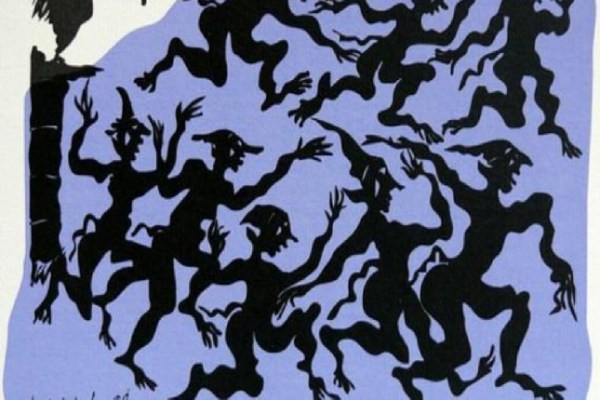
These are malicious, disgusting creatures that appear on December 24, and only leave on January 6. They come to Earth to tease people by playing unpleasant tricks on them. At that time, the inhabitants of Greece and Cyprus leave “Loukoumades” (small, sweet donuts) and “loukanik” (sausages) on the roofs of their houses to satisfy the hunger of voracious monsters and hang crosses in the doors, windows, and on fireplaces so that beasts would not enter their homes.
Christmas pudding in Great Britain
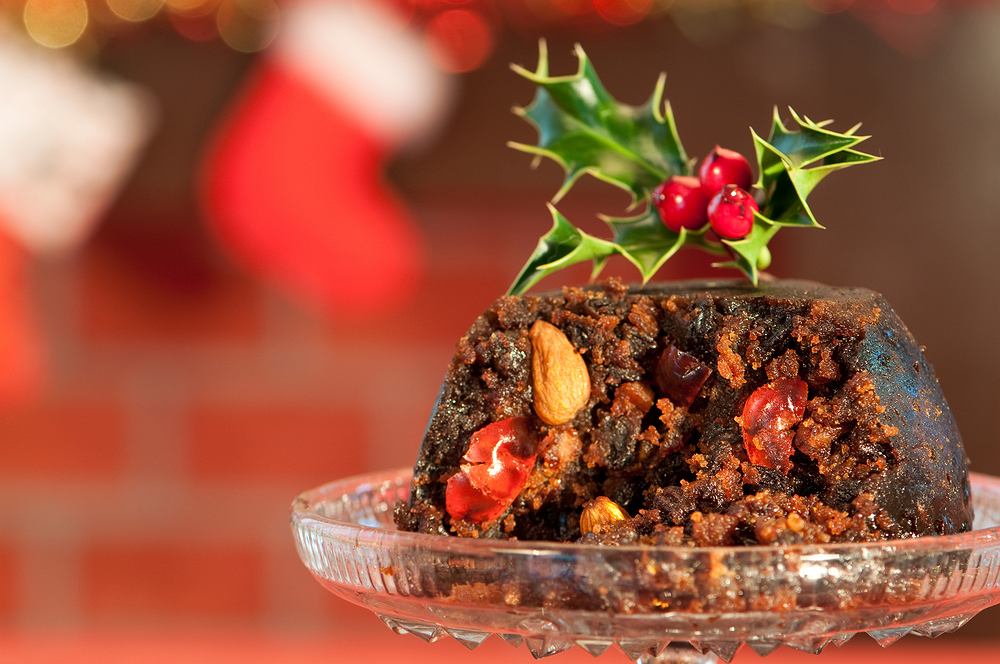
Pudding is a very important Christmas dish in Great Britain. The tradition of preparing this dessert is unique. He orders that the pudding should be made of thirteen ingredients, symbolizing Jesus Christ and the twelve apostles. These are flour, beef tallow, almonds, three types of raisins, bread crumbs, sugar, eggs, rum, grated carrots, candied cherries, and lemon juice. When mixing all the ingredients for the pudding, each family member should make a wish. However, it will only come true if we mix it clockwise! Every week, remove the pudding, stir it again, add a little rum, and put it back in the cold place. It is ready only after three months. Christmas pudding is served with a pudding or brandy topping. Alcohol is set on fire, and fire is meant to deter misfortune.
Family event in the Czech Republic and Slovakia
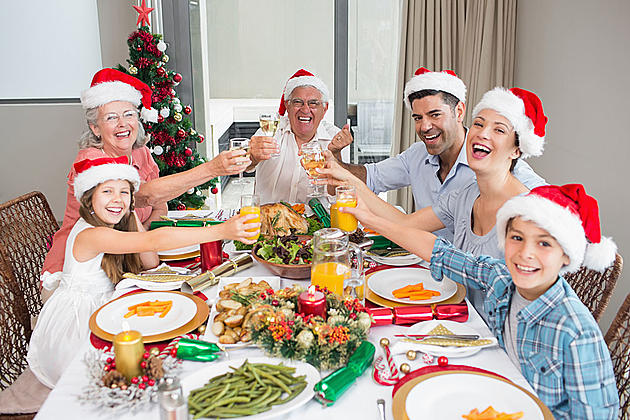
The Christmas season is a special time in the Czech Republic. Holidays are here a time of mutual family meetings and a day off when you can have fun. Already a few weeks before Christmas, both in the Czech Republic and Slovakia, shop windows attract customers with special promotions and colorful tinsel.
However, the real holiday season does not start until December 24. Believers fast throughout the day, then make wishes and give each other gifts. In almost every house there is a Christmas tree around which the family gathers to sit down to dinner when the first star appears in the sky. On the table, for example, “vánočky” – a traditional white cake resembling sweet challah with dried fruits and nuts in appearance and taste. The first dish consumed is “Opłatek” (see Poland). Then the mushroom soup and obligatory fish are on the table, and the best, of course, is carp. In Slovakia, and especially around Bratislava, cabbage soup is often served instead of mushroom soup. Czechs and Slovaks also attach significant importance to dried fruit and apples, which are used not only for food but also for holiday omens. During the Christmas season, our southern neighbors, of course, also sing Christmas carols, and people visit churches that are empty in the Czech Republic throughout the year.
